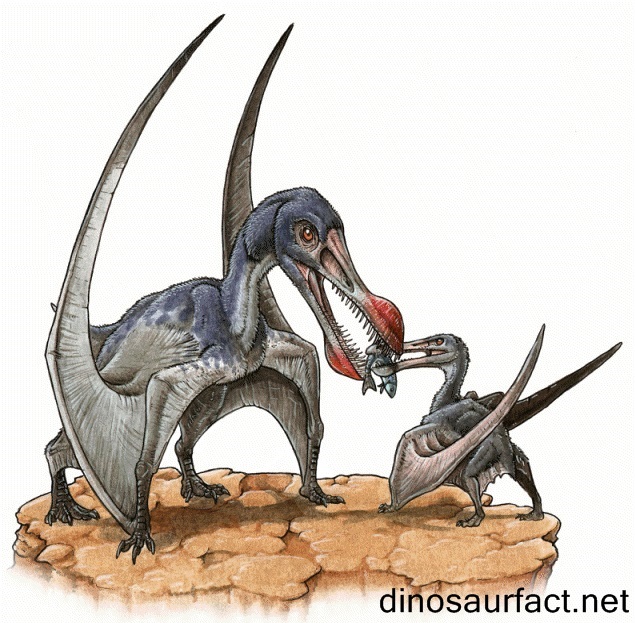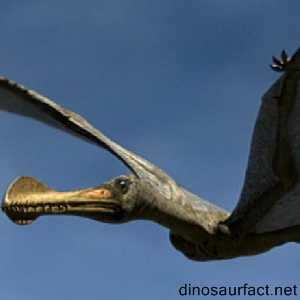 Click to visit the previous Pterosaurs bio
Click to visit the previous Pterosaurs bio
 |
|
 |
|
Kingdom: Animalia
Phylum: Chordata
Order: Pterosauria
Family: Ornithocheiridae
Genus: Ornithocheirus
 |
|
 |
|
 |
|

Ornithocheirus is the term derived from a Greek word and the meaning of the term is bird hand. The term is pronounced as or-nith-oh-care-us. This creature was known to have lived in South America and Western Europe during the Middle Cretaceous period (i.e.) around 95 million years ago. Researchers say that it would have got a wing span of about 10 feet and it would have weighed around 70 pounds. Diet of these creatures would have been fish. These creatures had a thin snout and large wingspan with bony protuberance on the end.
Ornithocheirus was not the largest pterosaur which could fly since quetzalcoathlus was regarded as the largest pterosaur that could fly. But, Ornithocheirus was the biggest flier of its days since quetzalcoatlus appeared only after the period of Ornithocheirus.
The characteristics that differentiated Ornithocheirus from other pterosaurs are that it had a huge wingspan and it also had a bony keel at the end of its nose. It had also got a long slender skull. According to researchers, this bony keel would have been a sexually chosen characteristic.
The first fossil of Ornithocheirus was found in England in Sussex during the year 1827. Till the year 1869, they were not referred as Ornithocheirus. In spite of the fact that only some parts of the fossils were found, around 35 specimens have been identified as the bones of Ornithocheirus from a collection of over 1000 bones. Many of these bones were found from England.
At the beginning of the Cretaceous period, long-tailed variety of pterosaurs, were replaced by the short-tailed pterosaurs like Ornithocheirus. Later, they were started to grow larger. It is known to have had sharp set of teeth with long jaw useful for it in catching fish. Ornithocheirus had a wing area like a small aero plane.
The wings of Ornithocheirus were made of skin expanded between ankle and a stretched out finger and it was supported by its legs and the other parts of the body as well. They would have able to fly around hundred kilometers without even flapping their wings. This would be the reason that its fossils were found in different areas of the world. To avoid flapping of wings, Ornithocheirus would have spent most of its life in search for warm air rising off the land. With these thermals, they would have been able to soar, circling slowly upwards. At this level, they would have also been able to glide without the use of any energy.
They would also have been able to fly at low level over the waves and by this; they would have caught fish with the help of its long beak. Just by shaking its head, it would have been able to throw the fish down into its throat and it gets pre-digested in the throat itself, even before going to the stomach.
When, there is a high temperature in the surface, Ornithocheirus would have got overheated since the large surface area connected to its wing-span is exposed to the sun. This makes the blood supply of Ornithocheirus to reduce and during these periods it would have found fishing and flying difficult.
Index
Extinct Profiles
 Triassic Dinosaurs
Triassic Dinosaurs Jurassic Dinosaurs
Jurassic Dinosaurs Cretaceous Dinosaurs
Cretaceous Dinosaurs Pterosaurs
Pterosaurs Marine Reptiles
Marine Reptiles Dinosaur Extinction
Dinosaur Extinction